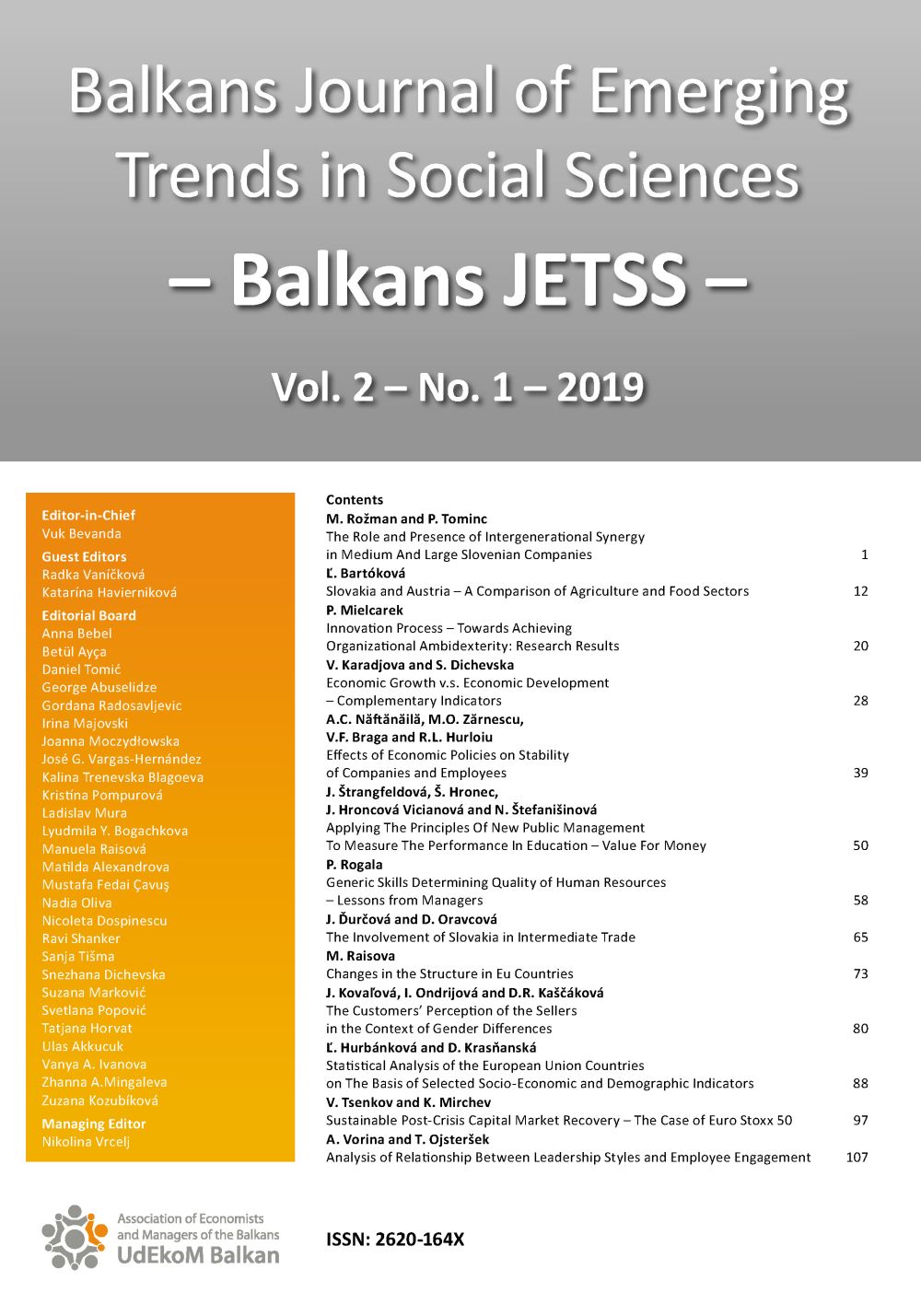SUSTAINABLE POST-CRISIS CAPITAL MARKET RECOVERY – THE CASE OF EURO STOXX 50
SUSTAINABLE POST-CRISIS CAPITAL MARKET RECOVERY – THE CASE OF EURO STOXX 50
Author(s): Vladimir Tsenkov, Kiril MirchevSubject(s): Business Economy / Management
Published by: Udruženje ekonomista i menadžera Balkana
Keywords: Efficient Market Hypothesis;volatility paradox;information efficiency and asymmetry;ТGARCH;EURO STOXX 50
Summary/Abstract: In the context of the last global financial crisis of 2008 and the subsequent post-crisis recovery of international capital markets, the question of the sustainability of that recovery process has been raised. To test that we use the presence and the magnitude of manifestation of market phenomena called volatility paradox. This paradox raises the question whether its presence in the conditions of the sustainable ascending market trend during the post-crisis recovery is not a signal marking the potential for a new forthcoming financial crisis. Studying the periods before and after the 2008 global financial crisis can give us a pattern market dynamics of volatility paradox manifestation in the pre-crisis period which can be traced out in the post-crisis period. If the existence of volatility paradox is possible, it should be seen in the pre-crisis period up to 2008. Its power of manifestation during this period should serve as a benchmark for verifying the post-crisis VP, both as an existence and as a size of manifestation compared to the demonstrated until 2008. The empirical results show that the market dynamics of the EURO STOXX 50 index proves the existence of volatility paradox, both in the pre- and the post-crisis period. For the same two periods for the shares included in the EURO STOXX 50 the existence of volatility paradox is not detected. Moreover, the shares of the EURO STOXX 50 index show higher market efficiency in the context of EMH in comparison with the index itself. The empirical research was made using market dynamics of the EURO STOXX 50 index and the shares it’s incorporated in the period 2005 - 2017. In this research, we use the daily returns of the explored index and shares whose volatility was modeled by TGARCH models.
Journal: Balkans Journal of Emerging Trends in Social Sciences Balkans JETSS
- Issue Year: 2/2019
- Issue No: 1
- Page Range: 97-106
- Page Count: 10
- Language: English

